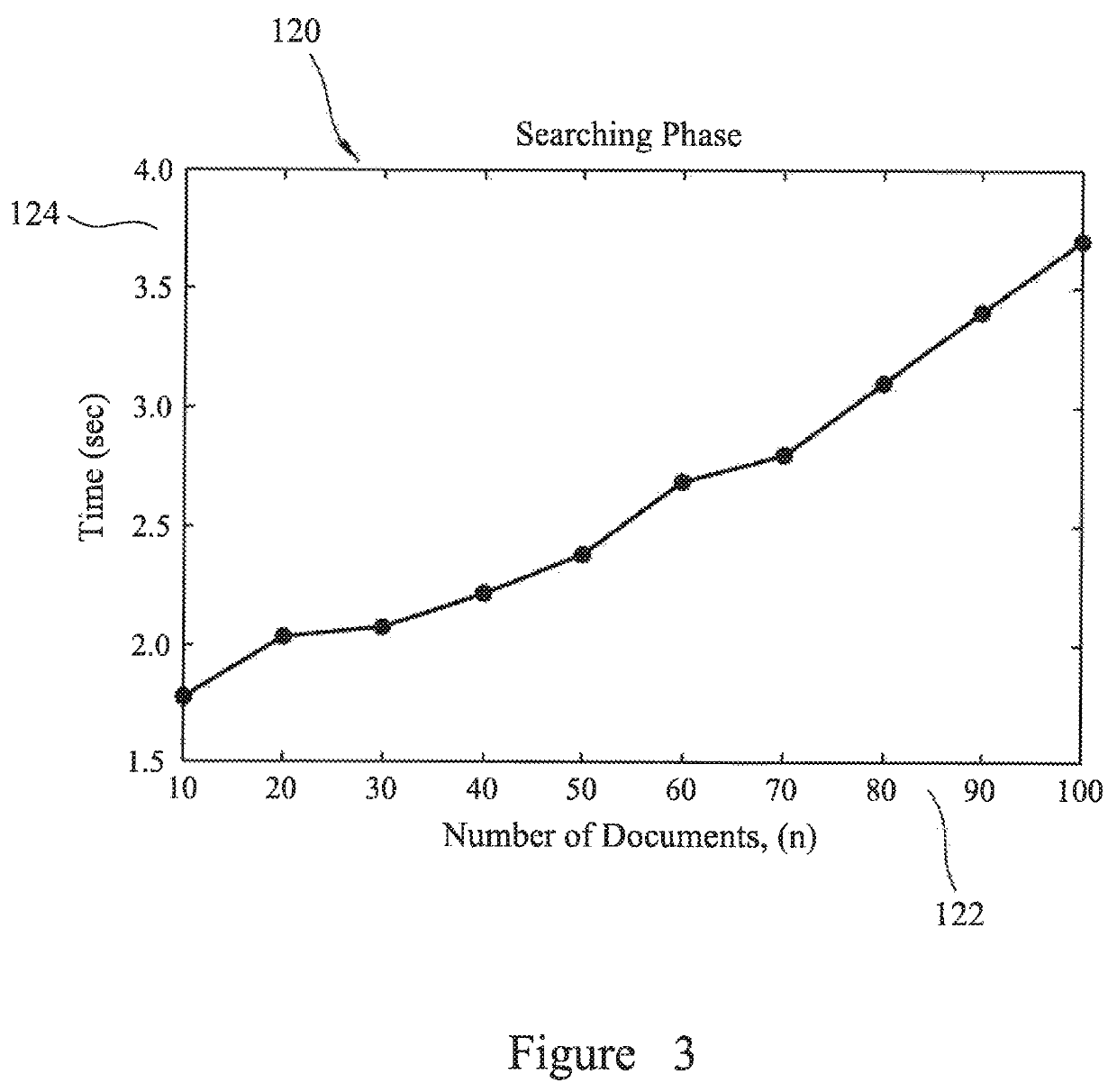Client-server computer system
a computer system and client server technology, applied in the field of client server computer system, can solve the problems of not providing security against adaptive adversaries and prone to distinguishability attacks, and achieve the effects of reducing distinguishability attacks, preventing search pattern leakage, and significantly enhancing security
- Summary
- Abstract
- Description
- Claims
- Application Information
AI Technical Summary
Benefits of technology
Problems solved by technology
Method used
Image
Examples
Embodiment Construction
[0041]An example computer system will now be described with reference to FIG. 1.
[0042]The computer system 10 takes the form is a client-server computer system and comprises, a client 12 and a server or cloud server 14. The client may be, for example, a desktop computer, a laptop computer, a tablet computer or a smartphone. The client is in communication connection with the server over a computer network, in this example, the Internet. The client has documents (D) 16 stored on it.
[0043]The client 12 generates a master key K used for symmetric key encryption, a session key ks used for computing a cryptographic keyed hash function and asymmetric key pairs (kpub,kpri) for RSA. The session key ks and the public key kpub are shared with the cloud server 14 over the Internet.
[0044]The documents 16 are encrypted, to form encrypted documents 18, such that the client 12 accesses each keyword within each document. Firstly, symmetric encryption, in this example, Advanced Encryption Standard-Ele...
PUM
 Login to View More
Login to View More Abstract
Description
Claims
Application Information
 Login to View More
Login to View More - R&D
- Intellectual Property
- Life Sciences
- Materials
- Tech Scout
- Unparalleled Data Quality
- Higher Quality Content
- 60% Fewer Hallucinations
Browse by: Latest US Patents, China's latest patents, Technical Efficacy Thesaurus, Application Domain, Technology Topic, Popular Technical Reports.
© 2025 PatSnap. All rights reserved.Legal|Privacy policy|Modern Slavery Act Transparency Statement|Sitemap|About US| Contact US: help@patsnap.com


